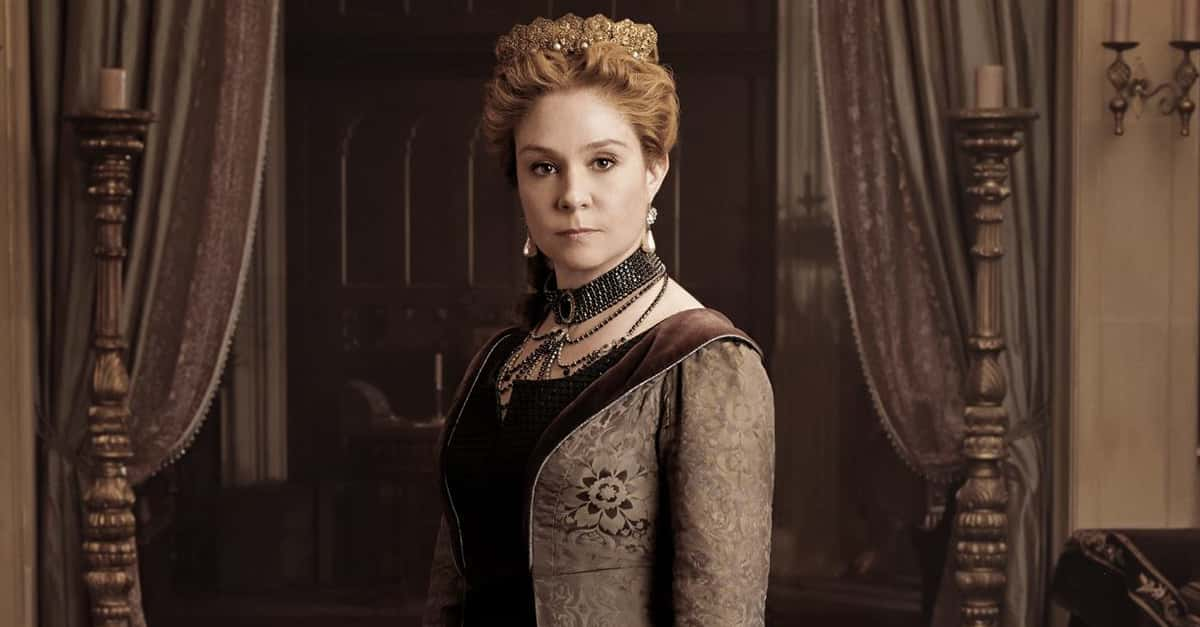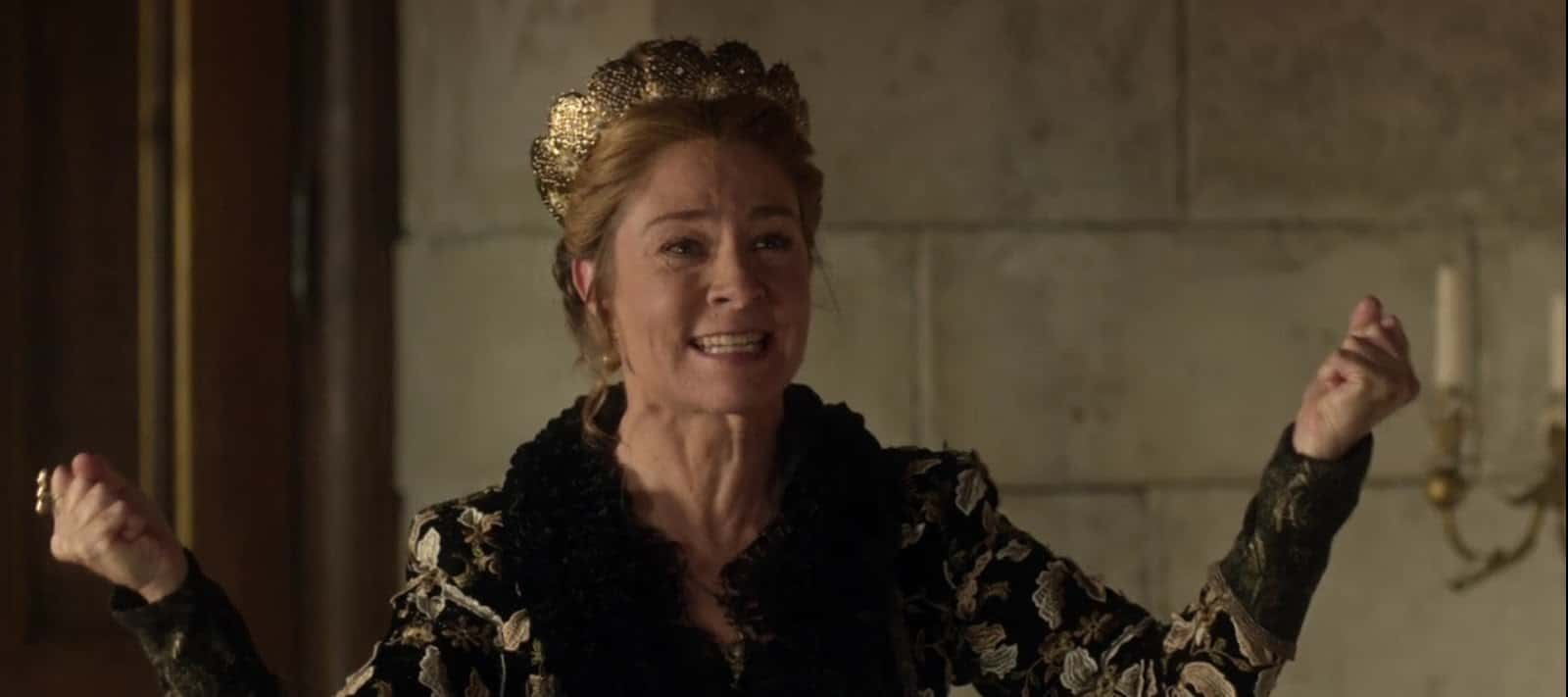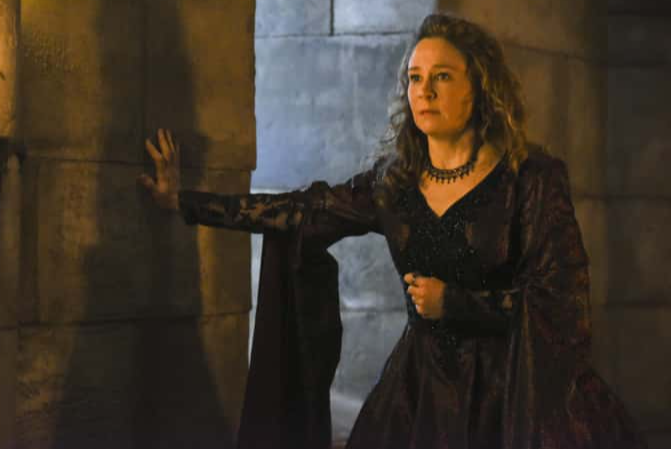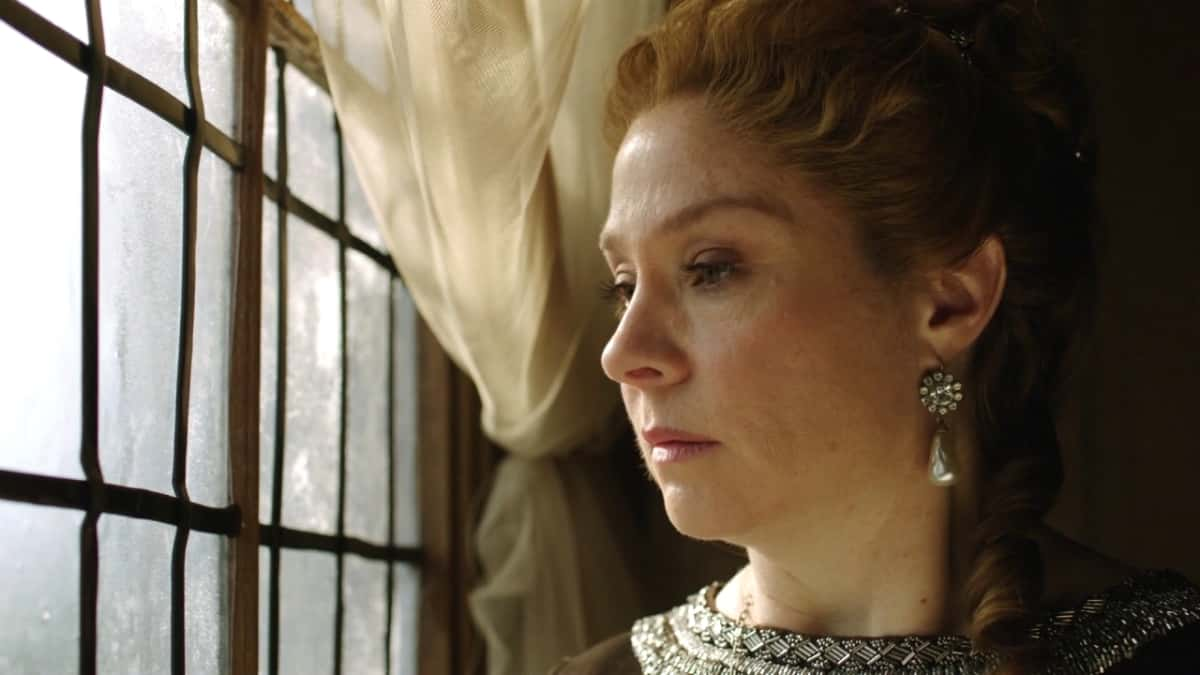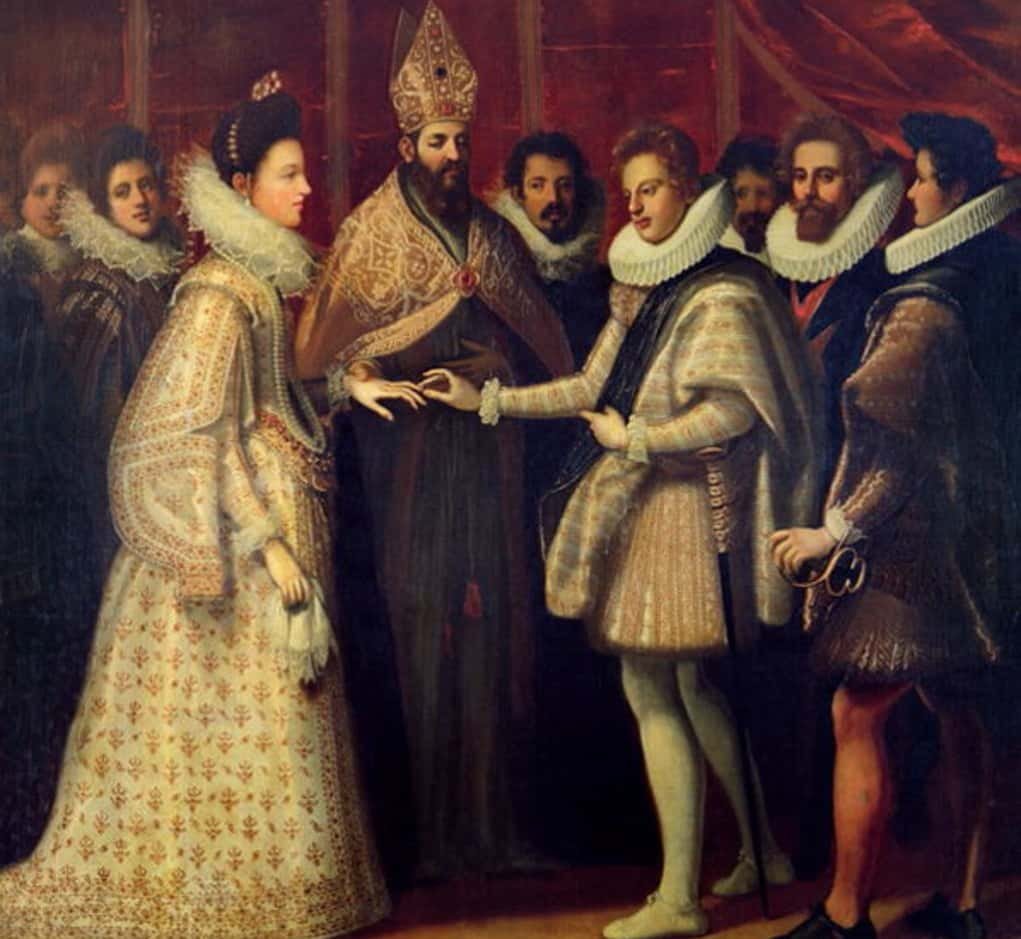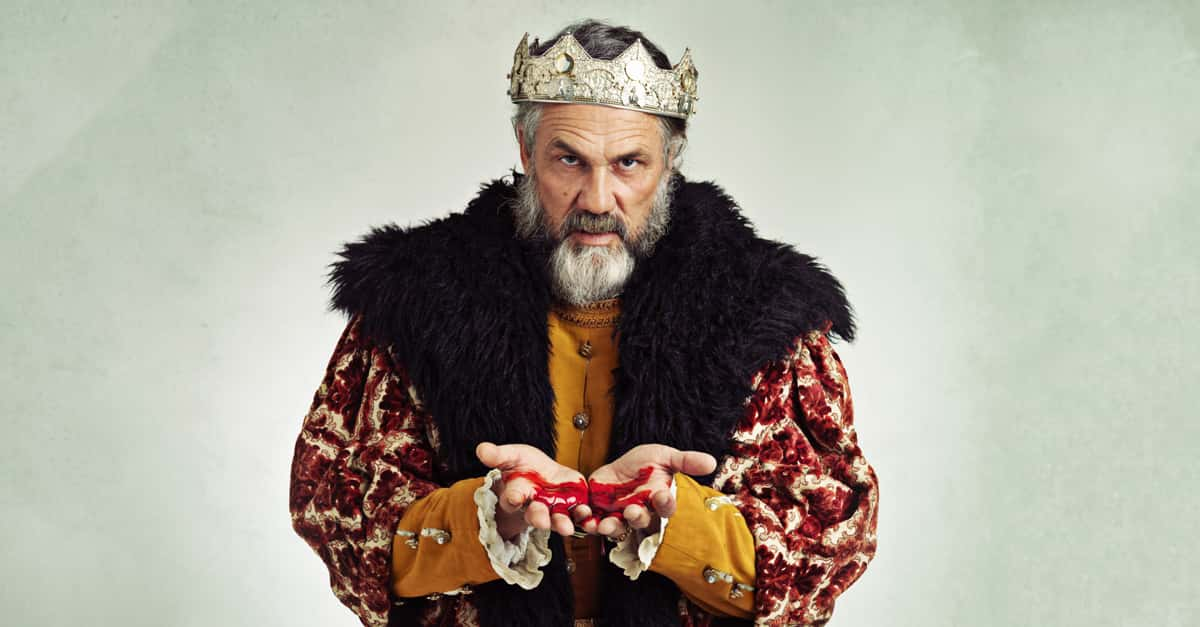It’s wrong to cast Catherine de Medici (b. 1519-d. 1589) as just a Machiavellian matriarch whose ambition eclipsed her children’s happiness… but it’s equally wrong to paint her as a passive pawn of circumstance. Scandal followed Catherine throughout her tumultuous life, and it’s clear she took an active role to survive and thrive in the deadly courts of Renaissance Europe. From her untimely birth, “security” was perhaps a foreign concept to Catherine. She transitioned from being an Italian captive in Italy, to a fertility-struggled princess in France, to a single mother immersed in religious strife. She is most remembered as the Queen Mother (and sometimes Regent) to her three sons, who successively became Kings of France and relied on Catherine’s guidance through the 16th century Wars of Religion. Here are 42 scandalous facts about Catherine de Medici, the deadly Queen Mother of France.
1. Not Without Blue Blood
These days, it’s common to view Catherine as an Italian nouveau riche who fluked her way into marrying French royalty. However, Catherine had very close claims to the French aristocracy through her mother, the French countess Madeleine de La Tour d’Auvergne. The Pope and the King of France had married Catherine’s parents together as a plot to secure the Italian states.
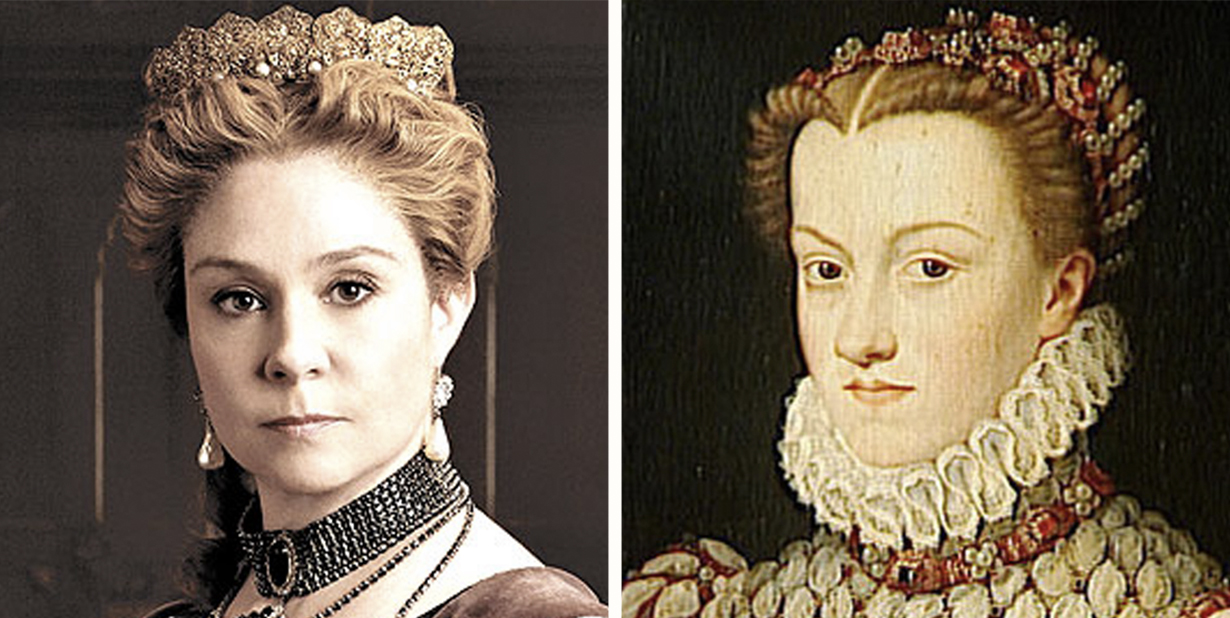
2. The Orphaned Duchessia
Within a month of her birth, both of Catherine's parents succumbed to illness. For the rest of her childhood, the vulnerable Medici heiress would be shuffled between relatives and convents to protect her from the family’s enemies in an increasingly volatile Italy.
3. The Republic Of Male Opinions No One Asked For
Contemporaries loved to highlight that Catherine was no great beauty. Even in her youth, a Venetian envoy described Catherine as “small of stature, and thin, and without delicate features, but having the protruding eyes peculiar to the Medici family." Another observer drew attention to Catherine’s face as “heavy-looking” and her body as underdeveloped, declaring that “altogether this little girl does not look like she will become a woman for a year and a half yet". Hey guys, she was a kid. Can we chill?
4. Big Brother From Another Mother
Catherine’s half-brother was Alessandro de Medici, who was believed to be the product of their father and a Moorish slave woman. Alessandro’s nickname “the Moor” references such origins, and his portraits also strongly suggest that he was of mixed race. Following the passing of their father, Catherine's brother assumed power and was the final Medici of the "senior" branch to govern Florence, before his unfortunate demise at the age of 26.
5. A Heavenly Hellion
In 1530, anti-Medici armies flanked the nunnery where young Catherine took refuge. The public discussed whether the 11-year-old heiress should be sent to a house of disrepute, undermining her role in the Pope's marital intentions. Certain that she was to be led to her end, Catherine shaved off her hair and wore a nun's habit, as she was convinced that no bride of Christ would go quietly. Eventually, she was led safely to the Pope’s custody, but all the way there, she still refused to discard her holy outfit. Little Catherine boldly navigated through the masses, even daring to retort at the intimidating crowd that wished her harm.
6. Sisters Before Misters
In a life marked by scant friendships and numerous adversaries, Catherine reserved a special place in her heart for the Sisters of Murate. These nuns provided her sanctuary and education during the tumultuous political upheaval of her youth. For the rest of her life, Catherine wrote to the nuns regularly and sent them revenue from of her own lands as their annual income.
7. Close Enough!
In July 1556, Catherine had Nostradamus draw horoscopes for her children. He predicted that each of her sons would be kings, but she would outlive them all. This turned out to the almost true: only three of her five sons became King of France and she outlived all but two of her children. Close but no cigar.
 pinterest
pinterest
8. Room With A View
It’s said that Catherine bored peep holes into the roof of Diane de Poitiers’s bedchamber so that she could see her husband “in action” with his mistress. She apparently noted the contrast between the disinterested performance she got from Henri versus the “spectacle” he gave Diane…
9. Meaner Than Fiction
Alexandre Dumas’s story, Queen Margot, helped popularized the legend of Catherine de Medici as a great poisoner, whose cabinets at Blois housed a secret stash of toxins. The legend was abetted, in no small part, by her Italian origins. In her day, Italians, especially women, were stereotyped as schemers in the art of poison.


History's most fascinating stories and darkest secrets, delivered to your inbox daily.
10. Creative Conception
After a decade of royal infertility, the physician Jean Fernel noticed slight "abnormalities" with Catherine and Henri's reproductive organs. He advised them with “positions” to take… and it appeared to work, as the couple went on to have ten kids. Someone should have gifted them a guide to intimacy a long time ago!
 pinterest
pinterest
11. Daddy (In-Law)’s Dearest
As Dauphine, Catherine arguably had a warmer relationship with her father-in-law than she did with her actual husband. Impressed by her bold wit, King Francis gave Catherine a privileged place in his infamous posse of impressive female friends, la petite bande.
12. A Pioneer Of Ponies…And Panties
Historians often cite Catherine with bringing side-saddle to France. This is the riding position wherein a lady sits with both of her legs on one side of the horse. With the side-saddle, Catherine also introduced France to an early concept of female underwear, because a man offering to help a woman off of her horse might otherwise risk espying the "sights of heaven" (their words, not mine).
13. Our Lady Of Vindication
Catherine was cordial to her husband’s mistress… during his lifetime. As Henri lay dying from a jousting accident, her true feelings revealed themselves. Catherine denied Diane de Poitiers any access to Henri’s deathbed, ignoring her husband’s final pleas for his lover. Following his passing, she expelled Poitiers and her friends from Paris. She also ordered the surrender of Poitiers’s crown jewels and her fine castle, the Château de Chenonceau. Even years later, Catherine expressed her true feelings about Poitiers in a letter to one of her children which read, "Never has a woman who loved her husband been fond of his mistress."
14. Toddlers In Tiaras And Coronets
Maybe it goes without saying (because The CW did make a whole TV show about it called Reign…), but Catherine’s daughter-in-law was the equally infamous Mary, Queen of Scots. She had known Mary since the age of five and a half, when the little Scottish queen was brought to Paris and raised alongside Catherine’s own children.
15. Grief Knows No Subtlety
After her husband succumbed during a joust, Catherine adopted the symbol of a shattered lance as her personal emblem, inscribed with the words, “lacrymae hinc, hinc dolor" (from this come my tears and my pain).

16. Power Deferred
In 1559, her eldest son, Francis II, came to the throne at just 15 years old. Contrary to the image of Catherine as the domineering queen mother, she began her first son-king’s reign by conceding power. Under French law, Francis was considered an adult and did not need a regent. And although he instructed his ministers to adhere to his mother's commands, she remained in profound sorrow following the demise of Henri II, directing all instructions to Mary Queen of Scots' uncles in the House of Guise.
17. Holding It Over Him
In 1560, it was clear to Catherine that her son Francis II would die soon.Anxious to gain authority over her forthcoming son, Charles IX, Catherine struck an agreement with Antoine de Bourbon, the subsequent successor for the young king's regency: he would give up his claim to the governorship and in return, she would give his brother, Condé, his freedom.
18. Queen Of The Quarrels
Catherine’s widowhood was marked by rising religious tensions between French Catholics and Protestants (called Huguenots). From Charles IX reign onwards, she would be a major player in the Wars of Religion, a conflict which lasted thirty years.
19. Bare To The Bank
The Pope met his end shortly after Catherine's marriage, and the new Pope refused to pay her extravagant dowry. Her father-in-law, Francis I, was notably dismayed and voiced his concern, "The girl has arrived with absolutely nothing." Some individuals find appeal in that, you know...
 pinterest
pinterest
20. Mother's Destruction
The Bartholomew's Day tragedy is arguably the largest blemish on Catherine's reputation. It was publicized as Crown-sanctioned revenge against Protestants in Paris for the August 1572 attempted plot against the life of Admiral Coligny. However, the aggression towards Huguenots (and innocent onlookers) escalated in the city for a week, then spread into the French countryside, where it continued, purge-like, well into the autumn months. Catherine’s culpability is still debated; historians suggest she might have only intended to take out the leaders and the rest is chaotic history. Still, not many individuals linked with a significant incident or tragedy are entirely blameless.
 continuing counter reformation
continuing counter reformation
21. But First, Let Me Paint A Selfie
Consider Catherine one of the earliest selfie enthusiasts; A huge patroness of all arts, Catherine was particularly interested in personal portraiture and commissioned official portraits of all her family members and other members of the court. The demand for these early-modern selfies noticeably decreased following her passing. Good news, Catherine, they've come back with a vengeance.
22. I Want To Believe
Deeply superstitious, Catherine was into the almanacs of Nostradamus and believed in astrology and soothsaying. That's right, you can tell your skeptical friends that reading your horoscope is a practice fit for a Queen.
23. Foodie Fashions: Debunked!
The idea that Catherine introduced the fork from Italy to France is a routinely discredited myth. Historians point out that Catherine’s father-in-law, Francis, frequently dined at elite Italian tables, where he would have encountered and even imported their culinary practices long before her arrival. Nevertheless, the legend of Catherine as a culinary tastemaker endures, and I don't see her doing much to dispel that myth!
24. Whispers Of The Devil
Catherine’s superstitious nature and dark reputation lent themselves to the rumor that she invented the Black Mass, a Satanic send-up of the traditional Catholic Mass. Of course, there's very little to prove this outside of a scandalous book by Jean Bodin.
25. Gold Will Be Their Shrouds…
Despite having ten children, Catherine outlived all except for Henri III (who met his tragic end just seven months following his mother's demise) and Marguerite (who was fortunate to inherent her mother's sturdy health and avoidance of violent confrontations).
26. The Bodice-Ripper Brigade
The legend of Catherine de Medici’s “escadron volant,” or “flying squadron” of female spies has been contested by various historians, but one can’t deny its interesting place in her story, adjacent to tales of poison and intrigue. According to rumors, Catherine maintained a "stable" of approximately 80 attractive ladies whom she would assign to the quarters of various courtiers for purposes of intimate intelligence gathering and networking. The name “flying squadron” had its roots in dance: when Catherine introduced ballet to the French court, her squadron gave its first performance as if they were flying.
27. Your 20s Are Just Like That
Towards the end of his life, Catherine’s second son-king, Charles IX, became emotionally unstable. He would vacillate from bragging about the number of casualties during the brutal event on St. Bartholomew's Day, to becoming guilt-ridden by the horrors, to merely accusing his mother as the instigator behind everything. Ever the practical parent, Catherine declared she had a “lunatic” for a son.
 altress
altress
28. Momma’s Boy Becomes The Man In Charge
Catherine’s favorite son was her fourth male child, and the third to become king, Henri III of France. He was the only one of her boys to ascend to throne as a fully-grown man, at the age of 23.
29. You’re Never Too Old For A Verbal Spanking
Catherine had a fifth, less famous son who did not rise to become king like his surviving brothers. Francis (born “Hercules”), the Duke of Anjou, was a thorn in his big brother Henri’s side for years. Catherine tried to bring Francis back into favor, at one point lecturing her grown duke son for six hours straight about toning down the reckless behavior.
30. He Grows Up, She Checks Out
Henri III valued his mother Catherine’s advice… until the last month of her life. In an attempt to resolve his family's conflict with the Catholic League, Henri initially expressed public gratitude towards his mother for her lifelong services to him and the state. Subsequently, he ordered the execution of the Duke of Guise, which was directly against her desires, in the room directly above her. Contemporaries believed Catherine's shock at her son's disobedience accelerated her demise from a lung infection at the age of 69.
31. Put On Your Dancing Chaussures
Most scholars consider the Ballet Comique de la Reine, performed at Catherine’s court in 1581, to be the first “authentic” ballet.
32. The Best Revenge Is Living Well (And Building Sick Châteaux)
Despite Henri II’s attempts to marginalize her influence during his lifetime, Catherine set out to immortalize her late husband’s memory through architecture. She was involved in the design of expensive castles at Montceaux-en-Brie, Saint-Maur-des-Fossés, and Chenonceau, which were all built to amplify the glory of the Valois dynasty.
33. Mother’s Mercy (Is Non-Existent)
When it came to her youngest surviving daughter, Marguerite, she and Catherine had a complicated relationship. This was made harder by Marguerite’s tendency to cheat on her husband. In October 1586, on Catherine’s orders, Marguerite’s husband imprisoned his wife and executed her lover… although not right in front of Marguerite, as Catherine had wanted. Small victories, I guess...
 pinterest
pinterest
34. Catch These Hands
Catherine ushered in the era of perfumed gloves in French fashion. However, this innovation came under scrutiny when one of her most significant rivals, Jeanne d’Albret, was found in a lifeless state. Rumors began to fly that the demise of d’Albret was associated with a pair of gloves she received as a gift. Ahh, the oldest trick in the book.
35. Move Over, Red Wedding
In 1572, Catherine forced her daughter to marry Henry de Bourbon, despite her own animosity towards French Huguenots like himself. Merely six days post the wedding, Catherine and Charles IX initiated the St. Bartholomew's Day tragedy, a Catholic mob against French Protestants (Huguenots), which coincidentally led to the deaths of many of Henry's assembled in-laws!
36. In-Laws, Am I Right?
Following the passing of Catherine and, months later, her last son, Henri III, Catherine's son-in-law took over the throne as Henri IV of France. However, he promptly annulled his marriage to Catherine’s daughter, Marguerite, and replaced her with Catherine’s own cousin, Marie de Medici! (At least your blood stayed on the throne, Catherine).
37. Close Call Delivery
In 1556, Catherine's belated yet fortunate fertility journey met a violent interruption when she almost lost her life while giving birth to twin girls, Victoria and Jeanne. Doctors had to break Jeanne's legs to save Catherine, which unfortunately resulted in the loss of Jeanne in the womb. Her sister, Victoria, departed this life seven weeks later. The physical and emotional trauma left Catherine unable to conceive again.
38. No Fertility Without Fermentation!
The first ten years of Catherine and Henri’s marriage were completely sterile. She looked into every trick to get pregnant, including drinking mule’s urine and even putting cow dung and ground up stag antlers on the ground as “sources of life". What ever happened to rose petals?
39. Student Of The Stars
Little is known about Catherine’s education other than she was fluent in Greek, Latin, and French. From an early age, she was also a keen mathematician—an interest that proved handy in her later passion for astrology.
40. Thanks Diane
Catherine’s husband was utterly enthralled by his mistress, Diane de Poitiers. In fact, it was Poitiers who had to remind Henri of his royal baby-making “duties,” and bid him to spend more (re)productive time with his wife. You know you're doing something wrong when your mistress starts telling you to sleep with your wife.
41. Corporal Punishment At The French Court
When Catherine’s youngest daughter, Marguerite, was found to be having an affair with Henry of Guise, Catherine and her son Charles IX allegedly had the princess pulled from her bed, her nightclothes ripped, and hair torn from her head as punishment. Yowch.
42. Paternal & Papal Invasions Of Privacy
On October 2 1533, the Pope Clement VII married Catherine off to the french Dauphin (the son of the King), Henri. The couple were lucky to be the same age—just 14 years old—but old men still wormed their way into the honeymoon. Henri’s father, King Francis I, apparently stayed in the bedroom until the marriage was fully consummated, and the Pope visited the couple in bed the next morning to bless the previous night’s “proceedings". Yick.

